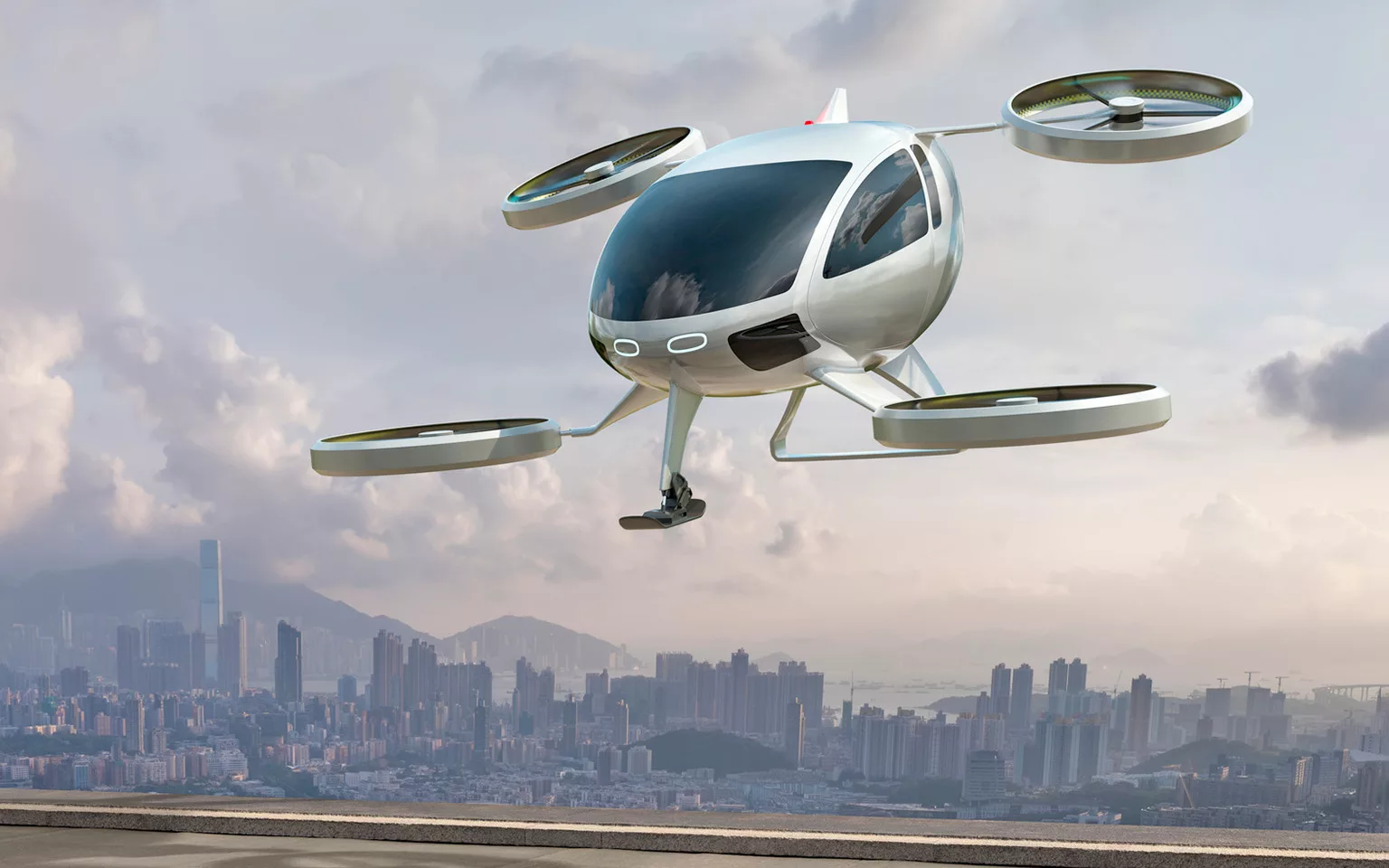The Rise of Vertical Takeoff and Landing Vehicles (VTOLs)
Summary
VTOL aircraft–commonly referred to as “flying cars” or “air taxis”–is no longer just science fiction. Jim Scott, co-founder and managing director of Artemis Aerospace takes a closer look at these exciting aircrafts that could one day fly overhead in your […]

VTOL aircraft–commonly referred to as “flying cars” or “air taxis”–is no longer just science fiction. Jim Scott, co-founder and managing director of Artemis Aerospace takes a closer look at these exciting aircrafts that could one day fly overhead in your neighborhood.
Launching an eVTOL will require years of preparation and research, which includes working with regulators and investing in infrastructure.
How VTOLs Work
VTOL aircraft have the capability of taking off vertically like helicopters and flying horizontally like drones or hovering like the former, although a variety of large lift propellers exist on some VTOL models such as Boeing V-22 Osprey that utilize jet engines and thrust vectoring technology in order to smoothly transition between vertical and horizontal flight.
eVTOLs’ primary purpose is to make life simpler for people by making transportation simpler without the need for sprawling airports and runways. Bypassing traffic congestion, they allow more people to use other means of travel while decreasing air pollution levels.
Vermont-based Beta Technologies specializes in creating electric VTOLs that resemble helicopters. Their ALIA-250 has the same layout as an aircraft but also features four lift rotors in front and back for vertical takeoff and landing, offering quieter operation than conventional helicopters and seating up to five passengers along with their pilot.
VTOLs in Flight
VTOLs fly similar to helicopters and airplanes, though without the use of lift-generating rotors in cruise flight; instead they rely on propeller slipstreams to push air ahead of them.
A blast of air sweeping along the ground creates an impact zone three or four feet deep that dislodges particles of dirt at high velocity and provides an upward force which counteracts any downward drag from aircraft’s fixed wings.
Helicopters, some military aircraft (such as the BAE Harrier), and now eVTOLs like BlackFly and Lilium’s on demand flying taxis use this principle for vertical flight. Their success depends on reducing engine weight and power electronics efficiency; also setting standards for safe flight paths, take-off/landing profiles, performance objectives. Without resolution of these issues widespread adoption of VTOLs will remain limited; which is why legislators and regulators have made clear rules regarding safety and air traffic control to support eVTOL adoption.
VTOLs in the Air
VTOLs are fast and agile aircraft that can fly for miles at a time, stream video and thermal imagery back to a base, land vertically to collect new charges before taking off again no runway required; landing can occur on rooftops, cars and open ground.
Throughout the 1960s, attempts were made to develop commercial passenger aircraft with vertical take-off and landing (VTOL) capabilities. For instance, Fairey Gyrodyne employed tip jets to power its rotor during takeoff and landing and an Eland turboprop as forward thrust.
Lockheed XFV and Convair X-13 VertiJet were two unrealized projects incorporating fans powered by jet exhaust. However, eVTOLs are making their debut into the market despite these failed efforts; Munich-based aviation startup Lilium recently unveiled an eVTOL prototype with two seats it claims will be safer than driving and five times faster than flying; by 2025 this service should be up and running!
VTOLs on the Ground
VTOL technology enables aircraft to take off vertically and land horizontally without using runways, making them more flexible in combat or rescue situations. It enables more agile aircraft that are less limited by these constraints, making them more capable in combat or rescue scenarios.
Multiple companies are developing electric VTOLs for passenger transportation and cargo shipping, including spinoffs of legacy manufacturers like EHang, Joby Aviation and Overair as well as new startups like Lilium and Alaka’i. Some use solely electric power while others utilize hybrid or hydrogen fuel cells in development.
VTOL passenger vehicles could start operating by 2025. These aircraft will transport passengers on scheduled routes between airports and various destinations in cities like New York and Chicago, piloted by qualified pilots trained to navigate them just like traditional airplanes or helicopters. Over time, these revolutionary aircraft could expand our horizons by taking us farther afield without ever having to leave home.
